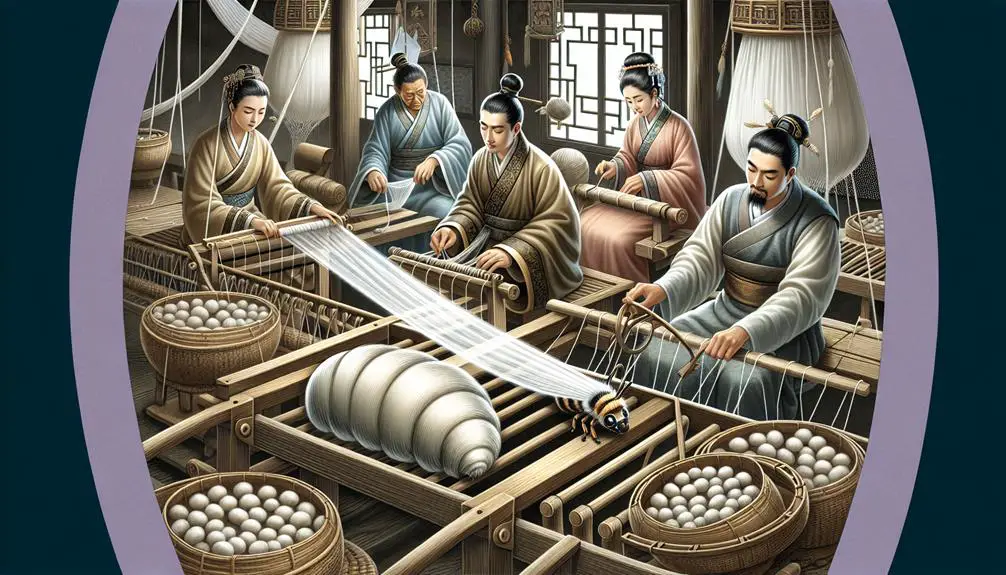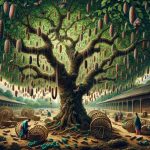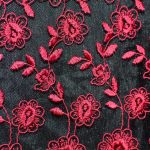I discovered silk around 2700 BC in ancient China. This luxurious fabric, which I innovated into a reel and loom, revolutionized the silk industry. Silk quickly became widely used in ancient Chinese society. If you want to learn more about this fascinating discovery and its impact, keep exploring the historical roots of silk production.
Table of Contents
Key Takeaways
- Empress Leizu discovered silk around 2700 BC through a serendipitous event.
- Silk production was revolutionized by Empress Leizu's inventions, including the silk reel and loom.
- Archeological findings support Empress Leizu's significant contributions to the ancient Chinese silk industry.
- Silk quickly became a symbol of wealth and prestige in ancient Chinese society.
- Empress Leizu's innovative discoveries led to the widespread use of silk in ancient China.
Ancient Chinese Discovery of Silk
Around 2700 BC, Empress Leizu of ancient China stumbled upon the discovery of silk when a silkworm cocoon unexpectedly landed in her cup of tea. This significant accident led to the development of silk, a luxurious fabric that became highly sought after both in China and around the world. Empress Leizu played a vital role in the advancement of silk production by inventing the silk reel and silk loom, which revolutionized the processing of silk fibers. These innovations allowed for the efficient and precise manufacturing of silk textiles, paving the way for the widespread use of silk in ancient Chinese society.
The silk reel and silk loom created by Empress Leizu were instrumental in transforming silk from a rare and precious material into a more accessible commodity. As a result, silk became not only a symbol of status and wealth but also a versatile resource used for clothing, currency, and even paper. Empress Leizu's contributions to the silk industry laid the foundation for the flourishing silk trade that would define ancient China's economy and culture.
Empress Lei Zus Silk Legend
Empress Lei Zu's serendipitous encounter with a silkworm cocoon in her tea marked the legendary beginning of silk's discovery in ancient China. Lei Zu's contribution to silk production goes beyond this discovery; she is also credited with inventing the silk reel and silk loom. These inventions revolutionized the processing of silk fibers, making production more efficient and widespread. Lei Zu's innovative spirit and keen observation paved the way for the silk industry to flourish in ancient China.
| Empress Lei Zu's Contributions | |
|---|---|
| Discovered silk | Legend has it that a silkworm cocoon fell into her tea. |
| Invented silk reel | Revolutionized the way silk fibers were processed. |
| Created silk loom | Improved efficiency in silk production. |
Empress Lei Zu's role in the origins of silk production is supported by archaeological findings, solidifying her place in history as a pioneer in the luxury and wealth symbolized by silk in Chinese society.
Silks Serendipitous Origins
I stumbled upon fascinating information about the serendipitous origins of silk while researching its discovery.
The ancient production methods, the influence of the Silk Road, and the beginnings of sericulture all play vital roles in silk's history.
These points shed light on how silk evolved from a chance discovery into a prized commodity that shaped civilizations.
Ancient Silk Production
Stumbling upon a silkworm cocoon in my tea, I inadvertently unraveled the serendipitous origins of silk production in ancient China.
Silk, originating in China around 2700 BC, was discovered by Empress Leizu when a silkworm cocoon fell into her cup of tea.
Archeological findings, such as tampered silk cocoons and woven silk cloth, solidify China's role as the birthplace of silk.
Initially reserved as a status symbol, silk served various purposes like clothing, currency, and paper.
Empress Leizu's contributions were pivotal; she invented the silk reel and loom, revolutionizing silk processing.
The ancient Chinese mastery of silk production laid the foundation for its significance and trade influence in the years to come.
Silk Road Influence
Silk's journey from an accidental discovery in ancient China to becoming a prized commodity along the Silk Road was a crucial moment in the history of global trade.
The exclusive production of silk in China until the opening of the Silk Road in 114 BC transformed the fabric into a symbol of luxury and status.
The Silk Road played an essential role in connecting China with distant civilizations, enabling the exchange of silk and other goods that shaped global trade.
This network of trade routes facilitated cultural exchanges, technological advancements, and economic prosperity for the regions it connected.
Silk's serendipitous origins and early exclusivity in China set the stage for its widespread demand and enduring reputation as a highly coveted fabric worldwide.
Sericulture Beginnings
Discovering the ancient origins of sericulture reveals a fascinating journey of accidental innovation and cultural significance. Empress Leizu, around 2700 BC, stumbled upon the discovery of silk when a silkworm cocoon fell into her cup of tea. This serendipitous encounter led to the invention of the silk reel and silk loom, pivotal tools that revolutionized the processing of silk.
Archeological findings, such as tampered silk cocoons and woven silk cloth, provide concrete evidence of silk's beginnings in China. Initially reserved as a symbol of status, silk quickly found its way into various aspects of ancient Chinese society, being used for clothing, currency, and even paper.
Empress Leizu's accidental innovation laid the foundation for the rich history and cultural significance of sericulture.
Archeological Evidence of Silk Discovery
When looking into the archeological evidence of silk discovery, one can find compelling proof of its ancient origins in China.
Discoveries like tampered silk cocoons and woven silk cloth point to a rich history of silk production in this region.
These findings shed light on the intricate processes and techniques developed by the ancient Chinese to cultivate and utilize silk.
Silk Origins Unearthed
Unearthing archaeological evidence in ancient China reveals the early origins of silk, shedding light on its fascinating discovery by Empress Leizu around 2700 BC. The tampered silk cocoons and woven silk cloth found provide tangible proof of the significance of silk in ancient China.
Empress Leizu's innovative contributions, such as the silk reel and loom, revolutionized the processing of silk fibers. Initially reserved for the elite, silk quickly became a symbol of wealth and prestige in ancient Chinese society.
This discovery not only transformed the textile industry but also marked a cultural shift, showcasing the importance of silk beyond its practical uses. The archaeological findings offer a glimpse into the rich history and craftsmanship behind the luxurious fabric that continues to captivate us today.
Ancient Silk Production
Ancient Silk Production reveals a rich tapestry of history through the tangible remnants of silk cocoons and woven cloth, affirming its origins in ancient China.
The discovery of silk by Empress Leizu around 2700 BC marked the beginning of silk production in China. Archeological findings, such as tampered silk cocoons and intricate silk fabrics, provide concrete evidence of this ancient practice.
Empress Leizu's accidental encounter with a silkworm cocoon in her tea led to the development of silk, initially revered as a symbol of status. Over time, silk became integral to Chinese culture, serving various purposes like clothing, currency, and even paper.
The protection of silk production through imperial decree highlighted its cultural and economic importance in ancient China.
Silks Mysterious Beginnings
Uncovering the origins of silk reveals a fascinating tale of ingenuity and happenstance. Silk, discovered in ancient China around 2700 BC by Empress Leizu, has a mysterious beginning linked to a serendipitous event. Legend has it that Empress Leizu stumbled upon silk when a silkworm cocoon fell into her cup of tea, unraveling the secrets of this luxurious fabric. The ancient Chinese quickly realized the potential of silk, leading to its widespread use for clothing, currency, and even paper. Archeological findings, such as tampered silk cocoons and intricately woven silk cloth, provide tangible evidence of silk's early presence in China.
Initially, silk was reserved for the elite and served as a symbol of status and wealth. Its production remained a closely guarded secret within China for centuries, with the Silk Road eventually facilitating its dissemination to other civilizations. Silk's mysterious beginnings not only highlight human curiosity and innovation but also underscore its enduring allure across diverse cultures and time periods.
Sericultures Ancient Roots
I'll start by shedding light on the origins of silk production and the historical significance of the silk trade.
This discussion will provide insight into the roots of sericulture and the impact it had on ancient societies.
Understanding these points will expose how silk became intertwined with the fabric of history.
Silk Production Origins
Exploring the ancient origins of silk production reveals a fascinating journey of innovation and cultural exchange.
Silk production, dating back 5,000 years in China, centers around the Bombyx Mori silkworms and mulberry leaves. Sericulture, the process of silk production, involves feeding silkworms mulberry leaves to create silk cocoons that are then unraveled to obtain silk threads.
This intricate process showcases the meticulous care and attention required to cultivate this luxurious fabric.
The discovery of silk production revolutionized the textile industry and paved the way for global trade routes like the Silk Road to spread this coveted material far and wide.
The origins of silk production intertwine nature, technology, and human ingenuity, shaping the course of history.
Historical Silk Trade
The historical silk trade holds ancient roots that intertwined cultures and civilizations through the exchange of this luxurious fabric. China's monopoly on silk production for millennia was fueled by the cultivation of Mulberry silkworms.
The Silk Road, a network of trade routes, played a pivotal role in spreading silk from China to regions like Egypt, Persia, Greece, and Rome. Byzantine monks clandestinely transported silkworm eggs out of China, kickstarting silk production in Byzantium.
This delicate and valuable commodity eventually reached Europe through trade routes like the Silk Road, shaping economies and fostering cultural exchanges along the way. The intricate history of the silk trade reflects the ingenuity and interconnectedness of ancient civilizations.
Silks Enigmatic Origins Unveiled
Revealing the mysterious beginnings of silk uncovers a fascinating journey that traces back to ancient China. Empress Leizu's discovery of silk around 2700 BC marked a revolutionary moment in history. Legend has it that a silkworm cocoon fell into her tea, unraveling the secrets of silk production. Empress Leizu's ingenuity led to the invention of the silk reel and loom, transforming the way silk was processed and solidifying its significance in ancient Chinese society.
Archeological findings, such as tampered silk cocoons and intricately woven silk cloth, provide concrete evidence supporting silk's origins in China. Initially cherished as a symbol of status and luxury, silk quickly became a versatile commodity used for clothing, currency, and even paper in ancient China. The enigmatic origins of silk not only highlight Empress Leizu's remarkable contribution but also shed light on the cultural and economic impact of this extraordinary discovery.
The Mythical Discovery of Silk
In ancient China, a serendipitous event involving a silkworm cocoon and a cup of tea sparked the legendary discovery of silk by Empress Leizu around 2700 BC. This accidental encounter led to the unraveling of the secrets hidden within the tampered silk cocoons, paving the way for the birth of the illustrious silk industry. Empress Leizu, in her ingenuity, not only discovered the potential of these delicate threads but also invented the silk reel and loom, revolutionizing the processing of silk.
The myth surrounding Empress Leizu's discovery of silk highlights the transformative power of chance and human curiosity. Her innovation in developing the silk reel and loom was instrumental in refining the production of silk, making it more accessible beyond the confines of the imperial family and high society. The tampered silk cocoons found in ancient China serve as tangible evidence of this ancient tale, solidifying the significance of Empress Leizu's contribution to the domain of silk production.
Unraveling Silks Ancient Secrets
Revealing the ancient mysteries of silk exposes a tapestry of innovation and tradition woven into the fabric of history. Silk weaving, originating from the ancient Chinese civilization around 2700 BC, bears the hallmark of Empress Leizu's accidental discovery. Legend has it that while sipping tea, a silkworm cocoon fell into her cup, unraveling the secrets of silk. Archeological findings further validate silk's ancient Chinese roots through evidence like tampered silk cocoons and intricately woven silk cloth.
Empress Leizu's contributions to the world of silk weren't limited to its discovery. She revolutionized silk production by inventing the silk reel and loom, paving the way for the mass production and distribution of this luxurious fabric. In ancient China, silk wasn't merely a textile but a symbol of status and prosperity, used for clothing, currency, and even paper. The intricate art of silk weaving, deeply embedded in ancient Chinese culture, continues to captivate and inspire modern artisans worldwide.
Unveiling the Silk Discovery Myth
Unraveling the myth surrounding the discovery of silk in ancient China sheds light on the fascinating origins of this luxurious fabric. According to Chinese legend, Empress Leizu stumbled upon silk around 2700 BC when a silkworm cocoon dropped into her tea, unraveling the beginnings of silk making.
The story goes that she noticed the delicate threads of the cocoon and invented the silk reel and loom to extract and weave the fibers, revolutionizing silk production in ancient China. While the tale of Empress Leizu's discovery has been passed down through generations, archeological findings, such as tampered silk cocoons and finely woven silk fabrics, provide tangible evidence supporting the ancient Chinese origins of silk.
Initially treasured as a symbol of status, silk quickly became integral to Chinese culture, finding its way into clothing, currency, and even paper production. The myth of Empress Leizu's role in the birth of silk making continues to captivate, highlighting the rich history and ingenuity of the ancient Chinese civilization.
Frequently Asked Questions
When Was Silk First Discovered?
Silk was first discovered around 2700 BC in ancient China. Its origins trace back to Empress Leizu, who stumbled upon silk when a silkworm cocoon fell into her tea. This chance encounter changed history.
Who Accidentally Discovered Silk?
Accidentally discovered silk, transforming textiles forever. Empress Leizu, an ancient Chinese ruler, found a silkworm cocoon in her tea. This led to innovations in silk processing and the rise of sericulture techniques.
Who Was the Founder of Silk?
The founder of silk was Empress Leizu of China around 2700 BC. She invented the silk reel and loom, revolutionizing silk production. A chance encounter with a silkworm cocoon in her tea sparked the creation of silk.
What Is the Name of the Queen Who Discovered Silk?
Empress Leizu, an ancient Chinese queen, discovered silk around 2700 BC when a silkworm cocoon fell into her tea. She invented tools for silk production, revolutionizing its use in clothing, currency, and paper.
- Why Is Red Velvet Not Red? - April 25, 2024
- How Do You Describe Velvet Fabric? - April 25, 2024
- How Strong Is Velvet? - April 25, 2024








